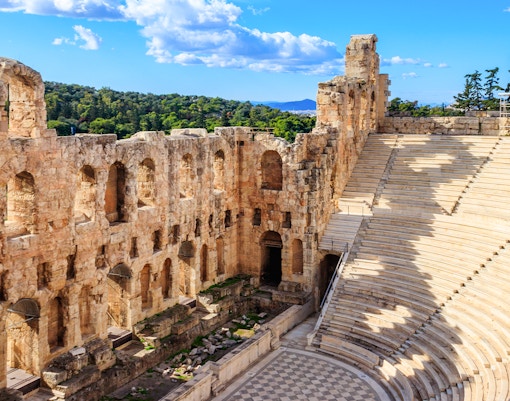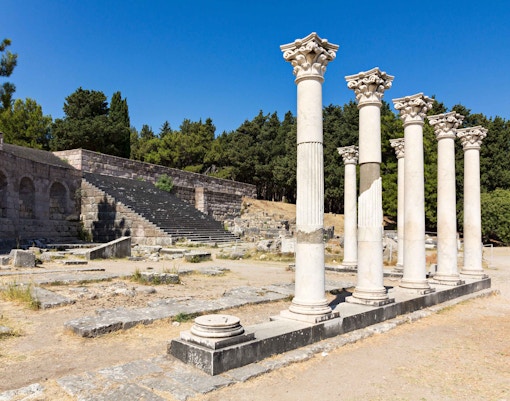Official name: Acropolis and slopes
Location: Below the citadel of the Acropolis of Athens
Address: Dionysiou Areopagitou, Athina 105 58, Greece
Function: Site of many sanctuaries, theaters, and other Ancient Greek cultural buildings.
While the main citadel of the Acropolis of Athens held the Parthenon, the Temple of Athena Nike, the Propylaea, and other important ancient monuments, the slopes of the Acropolis were used to build sanctuaries, theaters, and other structures for artistic, cultural, and religious activities. The south slope of the Acropolis was particularly favored because of its natural terrain and because it received the most sunlight, giving it much religious, cultural, and spiritual significance.




You can purchase your Acropolis tickets online. Booking online is convenient as you can make reservations for the day and time that you prefer. You’ll also be able to avail of great discounts.
Most of the monuments were built between the 5th and 2nd centuries BCE. The Odeon of Herodus Atticus was built in 161 AD.
On the North slope of the Acropolis, you’ll find the Klepsydra Spring with its paved court and a well, the Sanctuary of Aphrodite and Eros, as well as the cave sanctuaries of Apollo, Zeus, and Pan. The East slope of the Acropolis has a cave dedicated to the nymph Aglauros.